Land and Oceans | Term 1 Unit 2 | Geography | 6th Social Science - Exercises Questions with Answers | 6th Social Science : Geography : Term 1 Unit 2 : Land and Oceans
Chapter: 6th Social Science : Geography : Term 1 Unit 2 : Land and Oceans
Exercises Questions with Answers
Exercises
A. Choose the correct answer
1. Which of the following
is the smallest ocean on Earth?
a. The Pacific Ocean
b. The Indian Ocean
c. The Atlantic Ocean
d. The Arctic Ocean
Answer: d. The Arctic Ocean
2. The Malacca Strait
connects
a. The Pacific and Atlantic
Oceans
b. The Pacific and Southern
Oceans
c. The Pacific and Indian
Oceans
d. The Pacific and Arctic
Oceans
Answer: c. The Pacific and Indian Oceans
3. Which of the following
oceans is the busiest ocean?
a. The Pacific Ocean
b. The Atlantic Ocean
c. The Indian Ocean
d. The Arctic Ocean
Answer: b. The Atlantic Ocean
4. The frozen continent
is
a. North America
b. Australia
c. Antarctica
d. Asia
Answer: c. Antarctica
5. A narrow strip of
water that connects two large water bodies
a. A Strait
b. An Isthmus
c. An Island
d. A Trench
Answer: a. A Strait
B. Fill in the blanks.
1. The world’s largest
continent is Asia.
2. Chotanagpur plateau is the
mineral rich plateau in India
3. The largest ocean
is pacific ocean.
4. Deltas are third order landforms.
5. The Island continent
is Australia.
C. Circle the odd one out.
1. Africa, Europe, Australia,
Sri Lanka
Africa, Europe, Australia, Sri Lanka
2. The Arctic Ocean,
the Mediterranean Sea, the Indian Ocean, the Atlantic Ocean
The Arctic Ocean, the Mediterranean Sea, the
Indian Ocean, the Atlantic Ocean
3. Plateau, Valley,
Plain, Mountain
Plateau, Valley, Plain, Mountain
4. The Bay of Bengal,
the Bering Sea, the China Sea, the Tasman Sea.
The Bay of Bengal, the Bering Sea, the
China Sea, the Tasman Sea.
5. The Andes, the Rockies,
the Everest, the Himalayas
The Andes, the Rockies, the Everest, the Himalayas
D. Match the following
1. The South
Sandwich Trench- a) The Atlantic Ocean
2. The Milwaukee
Trench- b) The Southern Ocean
3. The Mariana
Trench- c) The Indian Ocean
4. The Eurasian
basin- d) The Pacific
Ocean
5. The Java Trench- e) The Arctic Ocean
Answer:
1. The South Sandwich
Trench - b) The Southern Ocean
2. The Milwaukee
Trench - a)
The Atlantic Ocean
3. The Mariana Trench - d)
The Pacific Ocean
4. The Eurasian basin - e) The Arctic Ocean
5. The Java Trench - c) The Indian Ocean
E. i) Consider the following statements.
1. Plains are formed
by rivers.
2. The ‘South Sandwich
Trench’ is found in the Indian Ocean.
3. Plateaus have steep
slopes.
Choose the correct answer
using the codes given below.
a. 1 and 3
b. 2 and 3
c. 1, 2 and 3
d. 2 only
Answer: a. 1 and 3
ii. Consider the following statements.
Statement I: Mountains are second order landforms.
Statement II: The Mariana Trench is the deepest trench
in the world.
Which of the statement(s) is/are
true?
a. I is true; II is
wrong
b. I is wrong; II is
true
c. Both the statements
are true
d. Statements I and
II are wrong.
Answer: c. Both the statements are true
F. Answer in a word
1. Which is the highest plateau in the world?
Tibetan Plateau
2. Name a second order landform.
Mountains, Plateau and Plains
3. Which ocean is named after a country?
Indian Ocean
4. Name the island located in the Arabian Sea.
Lakshadweep
5. What is the deepest part of the ocean called
as?
Trench
G. Answer in brief.
1. What is a continent?
• Continents and
oceans are grouped as first order landforms.
• The vast land masses
on Earth are called Continents
• There are seven
continents.
• They are Asia, Africa, North America, South America,
Antarctica, Europe and Australia.
2. Name the continents which surround the Atlantic
Ocean.
• The Caribbean Sea,
the Gulf of Mexico, the North Sea, the Gulf of Guinea and the Mediterranean Sea
are important marginal seas of the Atlantic Ocean.
• St. Helena,
Newfoundland, Iceland and Falkland are some of the islands found in this ocean
3. What are oceans?
• Oceans are vast
expanse of water.
• Seas are water
bodies partially or fully enclosed by land.
4. List out the names of continents according to
their size
Asia, Africa, North America, South America,
Antarctica, Europe, and Australia.
5. Name the oceans which surround North America
and South America
The Atlantic Ocean
H. Distinguish between
1. A Mountain and a Plateau
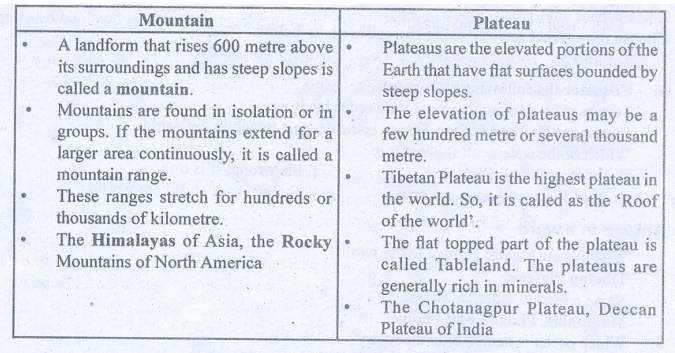
Mountain
• A landform that
rises 600 metre above its surroundings and has steep slopes is called a
mountain.
• Mountains are found
in isolation or in groups. If the mountains extend for a larger area
continuously, it is called a mountain range.
• These ranges stretch
for hundreds or thousands of kilometre.
• The Himalayas of Asia, the Rocky Mountains of North America
Plateau
• Plateaus are the
elevated portions of the Earth that have flat surfaces bounded by steep slopes.
• The elevation of
plateaus may be a few hundred metre or several thousand metre.
• Tibetan Plateau is
the highest plateau in the world. So, it is called as the ‘Roof of the world’.
• The flat topped part
of the plateau is called Tableland. The plateaus are generally rich in
minerals.
• The Chotanagpur
Plateau, Deccan Plateau of India
2. An ocean
and a sea
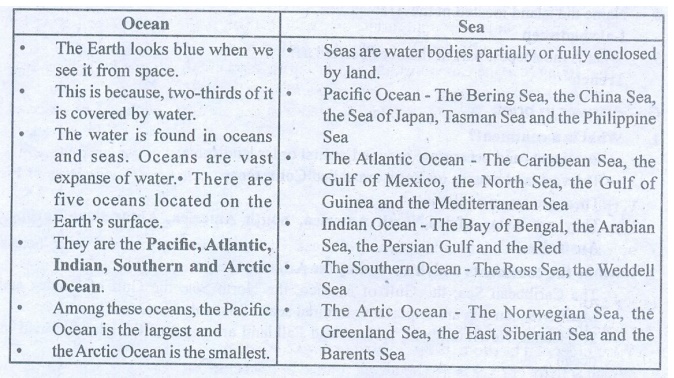
Ocean
• The Earth looks blue
when we see it from space.
• This is because,
two-thirds of it is covered by water
• The water is found
in oceans and seas. Oceans are vast expanse of water. There are five oceans
located on the Earth’s surface.
• They are the
Pacific, Atlantic, Indian, Southern and Arctic Ocean.
• Among these oceans,
the Pacific Ocean is the largest and
• the Arctic Ocean is
the smallest.
Sea
• Seas are water bodies
partially or fully enclosed by land.
• Pacific Ocean - The
Bering Sea, the China Sea, the Sea of Japan, Tasman Sea and the Philippine Sea
• The Atlantic Ocean -
The Caribbean Sea, the Gulf of Mexico, the North Sea, the Gulf of Guinea and
the Mediterranean Sea
• Indian Ocean - The
Bay of Bengal, the Arabian Sea, the Persian Gulf and the Red
• The Southern Ocean -
The Ross Sea, the Weddell Sea
• The Artie Ocean -
The Norwegian Sea, the Greenland Sea, the East Siberian Sea and the Barents Sea
I. Answer the following questions in detail
1. Write down the classification of land forms.
The classification of land forms,
First order Landform -
Continents, Oceans
Second order Landform
- Mountains, Plateaus, Plains
Third order Landform -
Valleys, Beaches, Sand Dunes
2. Write a note on plateaus.
• Plateaus are the
elevated portions of the Earth that have flat surfaces bounded by steep slopes.
• The elevation of
plateaus may be a few hundred metres or several thousand metres.
• Tibetan Plateau is the
highest plateau in the world. So, it is called as the ‘Roof of the world’.
• The flat topped part
of the plateau is called Tableland. The plateaus are generally rich in
minerals.
• The Chotanagpur
Plateau, Deccan Plateau of India
3. Plains are highly populated. Give reasons
Plains are flat and
relatively low-lying lands. Plains are usually less than 200 metre above sea
level. Sometimes they may be rolling or undulating. Most plains are formed by
rivers and their tributaries and distributaries. These plains are used
extensively for agriculture due to the availability of water and fertile soil.
They are most suitable for human inhabitation. Hence, they are the highly
populated regions of the world.
4. Give the important features of the Pacific Ocean.
• The Pacific Ocean is
the largest and deepest ocean on the
Earth.
• It covers about
one-third of the Earth’s total area.
• This ocean’s shape
is roughly triangular with its apex in the north at the Bering Strait which
connects the Pacific Ocean with the Arctic Ocean.
• The Bering Sea, the
China Sea, the Sea of Japan, Tasman Sea and the Philippine Sea are some of the
marginal seas of the Pacific Ocean.
• Indonesia,
Philippines, Japan, Hawaii, New Zealand are some of the islands located in this
Ocean.
• The deepest point Mariana Trench is 10,994 m- and is
located in the Pacific Ocean.
• A chain of volcanoes
is located around the Pacific Ocean called the Pacific Ring of Fire.
5. Write down the importance of oceans.
The Earth looks blue
when we see it from space. This is because, two-thirds of it is Covered by
water. The water is found in oceans and seas. Oceans are vast expanse of water.
Seas are water bodies partially or fully enclosed by. Land
J. Picture Study
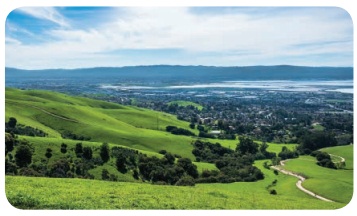
1. Name the landform.
2. What order of a landform is this?
3. Which activity
of river is this landform formed by?
K. i) Activity
1. Trip to the nearby
area to appreciate the physical features of any kind of landform.
2. Conduct a quiz on landforms and oceans.
ii) Activity
1. Give examples for
the following using an Atlas.
a. Bay:
b. Gulf:
c. Island:
d. Straits:
2. Map reading (with the help of atlas)
a. A sea in the east of India
b. Continents in the west of Atlantic Ocean
c. Continents in the south of Arctic Ocean
d. A strait between India and Sri Lanka
e. Oceans which surround Australia
f. Find out the Isthumusses (Create more questions)
3. On the given outline map of the world, label
the continents and mountain ranges.
4. On the given outline map of the world, label oceans, seas, isthumus and straits.
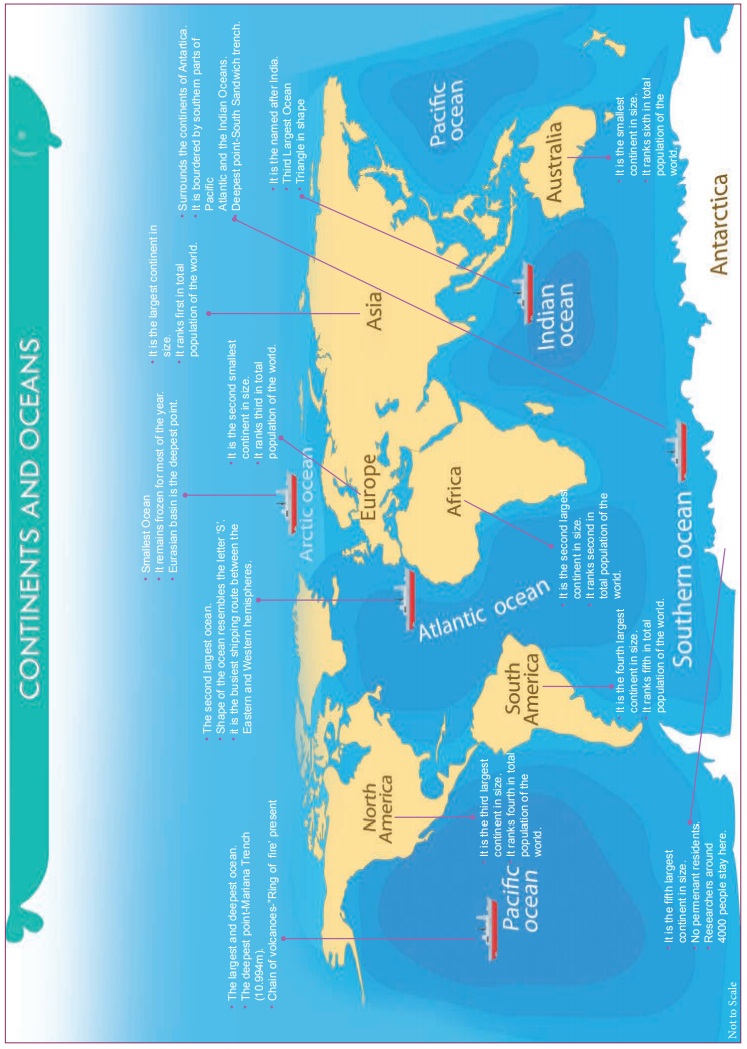
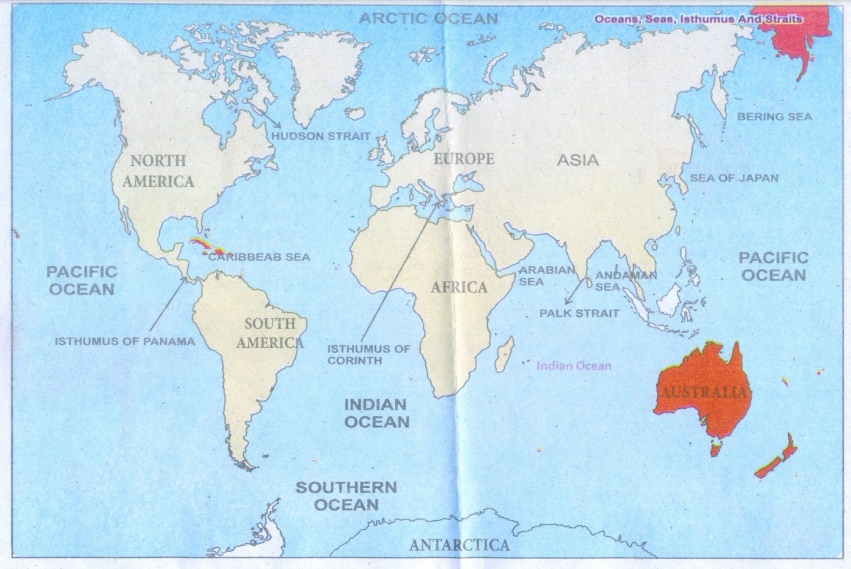

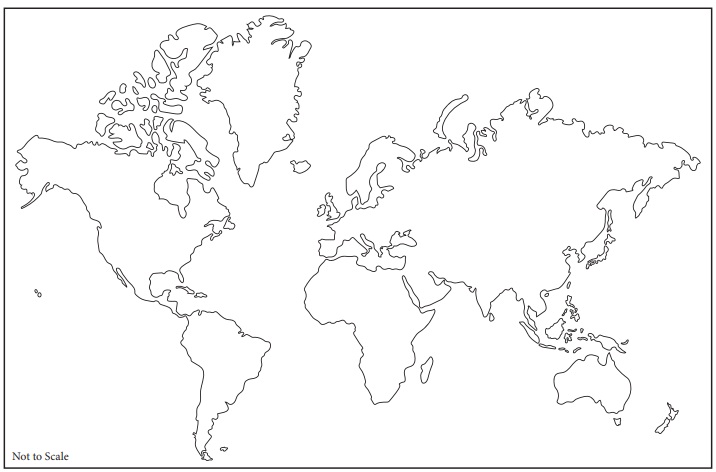
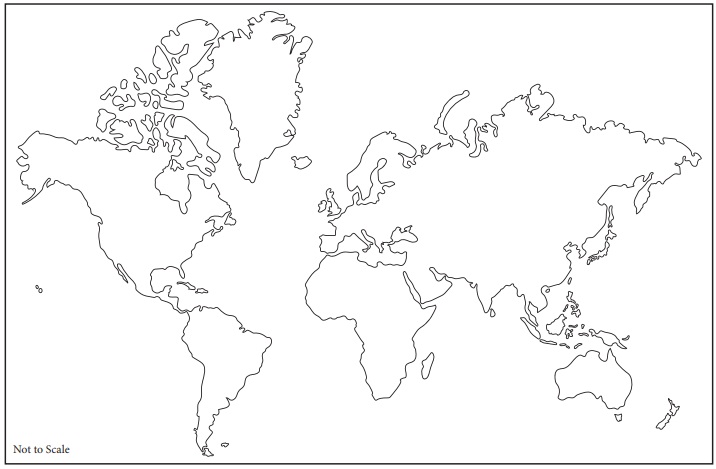
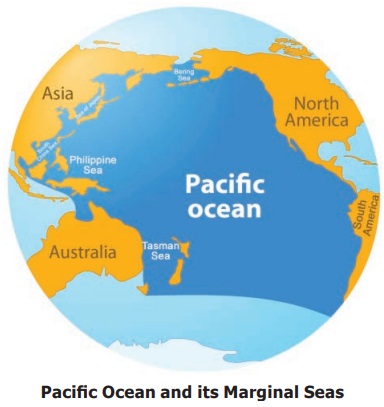
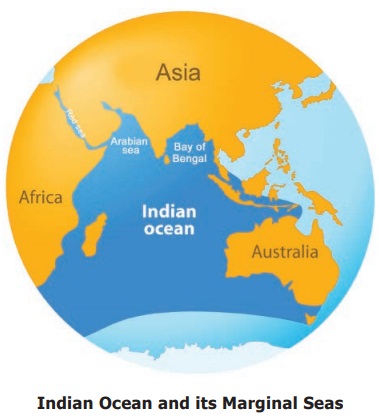
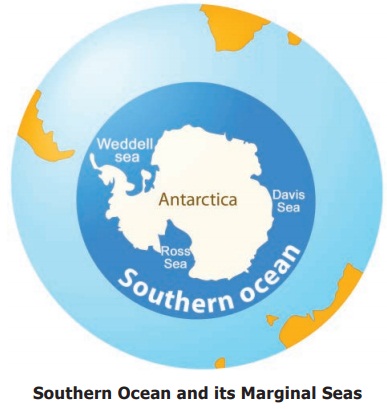

Related Topics